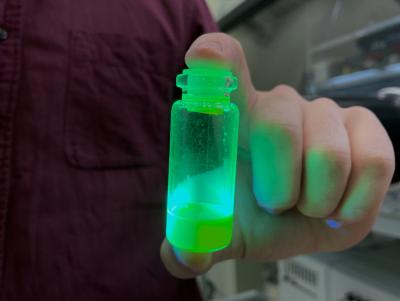ITMO scientists have created perovskite nanocrystals that preserve their unique optical properties in water and biological fluids. This material could offer new opportunities for the optical visualization of biological objects and promote the investigation of internal organs in living organisms and monitoring of diseases.

Nanomaterials based on halide perovskites hold great potential for use in bioimaging: perovskite nanoparticles can be potentially applied for visualization purposes in order to study biological processes in cells and living organisms. However, the main limitation that prevents their application as luminescent markers is their instability in aqueous solutions.
The scientists from ITMO University have spent more than a year looking for a way to protect perovskite nanoparticles from water and various chemical substances. As a result, they managed to produce perovskite nanocrystals covered with a special silicate coating. This coating was additionally modified by organic hydrophobic chemical groups. Thanks to this coating, perovskites can preserve their properties in aqueous solutions for up to one week.
'We have tested our nanomaterial not only in water but also in cell cultures. As a model, we have used tumor cells. We incubated perovskites covered with water-resistant coating with these cells and visualized them using optical microscopy. It is important to note that even when perovskite crystals interacted with a cell, they did not degrade and continued to emit light, which indicates their stability,' says Mikhail Zyuzin, a research associate at ITMO's School of Physics and Engineering.
The next step is in vivo testing with laboratory animals. The scientists will check the stability of perovskite nanoparticles after their injection in vivo. They also plan to reduce the potential toxicity of perovskites. For instance, this can be done by replacing lead with a more eco-friendly alternative, which will make the nanomaterial safer in use.
'By confirming the stability of our nanomaterial in various fluids, we have demonstrated only one of its potential applications. Water-resistant perovskite nanocrystals can also be used as a decorative luminescent colorant, as well as a marker for document protection. Our primary goal was to create a functional solution. Now we will test it in various conditions and applications,' says Sergey Makarov, professor at ITMO's School of Physics and Engineering.

